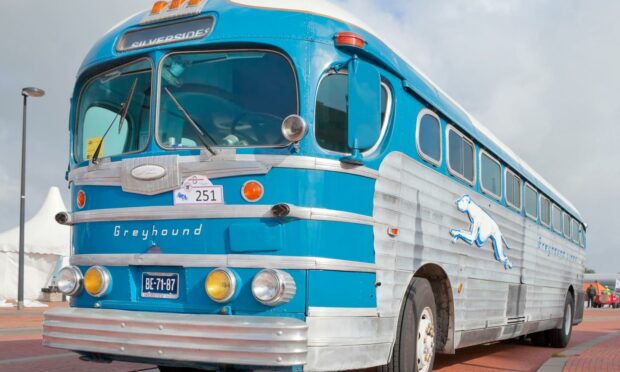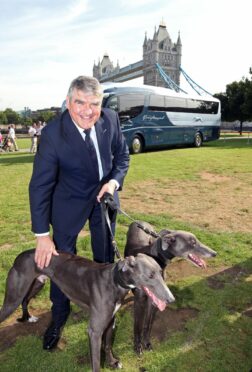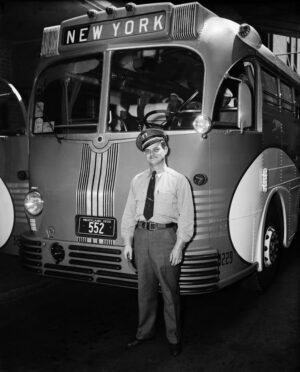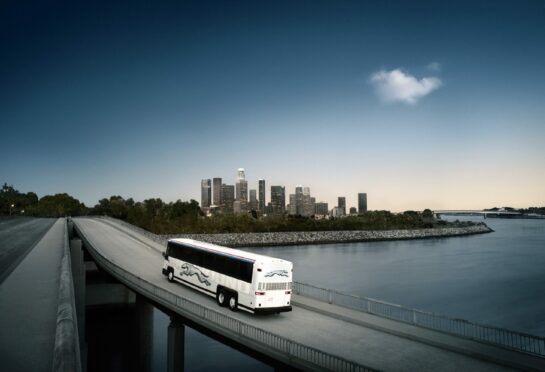First Group has sold its famous North American intercity bus service, drawing its ownership of the Greyhound Lines to close after 14 years.
The Scottish transport group became the surprise owner of the “iconic” US bus operator when it bought an American transport group Laidlaw in 2007 for an eye-watering £1.9billion.
The deal was more than just buses. It catapulted First Group into the blue-chip FTSE 100 index. Once the deal had settled in, First was the largest bus and rail operator in Britain if not the world.
It was a meteoric rise from the company’s humble beginnings as Grampian Transport, which was bought out of local authority ownership in 1989 and then floated on the London Stock Exchange in 1994.
Chief executive Sir Moir Lockhead and chairman Martin Gilbert, who had been instrumental in founding the business, lead the American acquisition. At the time, the US Laidlaw business also owned a student transport operation that was famous in its own right for its yellow buses.
The problem was the deal in 2007 saddled FirstGroup with debt. In 2013 the firm had to raise £615million from shareholders to service a £2bn debt mountain.
Greyhound had been founded in the US in 1914 by a Swedish immigrant, Carl Wickman. The moniker was initially a nickname due to the grey colour of the busses’ livery but the name stuck and was eventually adopted.
Greyhound buses were once the cheapest and easiest way to travel across America before mass vehicle ownership and air travel took off. By the time FirstGroup came to own it, the bus line had been in adminstration a number of times. And despite still being the largest provider of long-distance bus transportation in the US, making a profit was always a struggle.
FirstGroup introduced several improvements to the business, such as discounted tickets for passengers who buy in advance and several other incentives to encourage greater use of the service.
First even initially planned to introduce the famous brand in the UK in an effort to take on National Express and Megabus, which is owned by Stagecoach.
Reflecting on the group’s ownership of the business, David Martin, FirstGroup’s executive chairman said: “Greyhound is an iconic business which has been at the heart of North American life for more than a century, through its unique national network which connects communities across the continent.
“We are proud of the significant developments we made to Greyhound’s business model during FirstGroup’s ownership, including the introduction of express point-to-point routes, real-time pricing and yield management and a transformed customer offering and experience.”
The £125m sale of Greyhound Lines to Germany’s FlixMobility more than two years after putting the division up for sale has finally wound up the Aberdeen company’s foray into the US.
In July, FirstGroup offloaded the first part of its American business, First Student and First Transit, for £3.3bn to EQT Infrastructure, a private equity group.
Why sell?
FirstGroup has been looking to sell its US business since spring 2019 amid pressure from activist investors who continued to be concerned about the company’s liabilities and its business model.
Chief executive Matthew Gregory left the business last month after less than three years in the post and in the wake of demands for his resignation from the group’s biggest shareholder.
New York-based hedge fund Coast Capital made a call in July for Mr Gregory, and two non-executive directors, to step down after it said the sale of First Student and First Transit in the US was too cheap and poorly timed at the peak of pandemic disruption.
Mr Gregory denied his planned departure was due to pressure from Coast Capital and insisted the deal was at a “good price”.
New ownership for the hound
The Greyhound’s new owner, FlixMobility, operates an international bus network called FlixBus.
Greyhound still carries nearly 16 million passengers year to nearly 2,400 destinations across North America.
Mr Martin concluded: “The sale of Greyhound to FlixMobility is part of our portfolio rationalisation strategy to refocus FirstGroup as a UK public transport leader.
“The strength of Greyhound is its people, and I would like to thank them for their unwavering commitment to their customers and communities.
“As part of FlixMobility, I am confident that Greyhound will be well placed to continue to grow and develop their iconic services for many years to come.”



